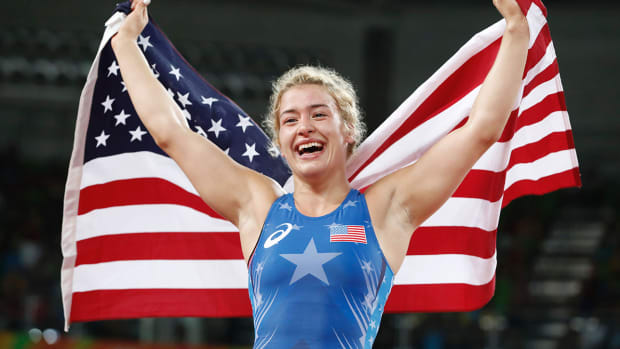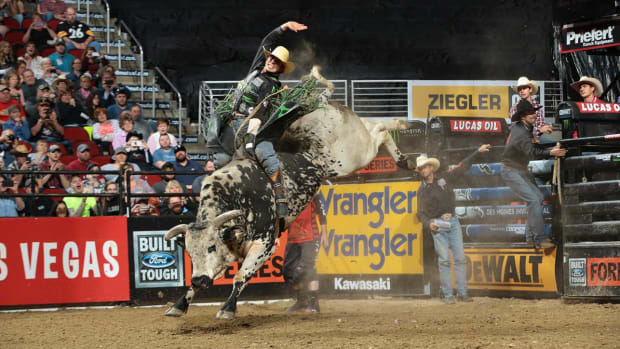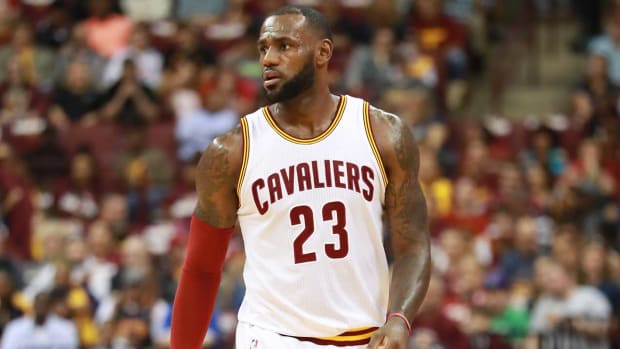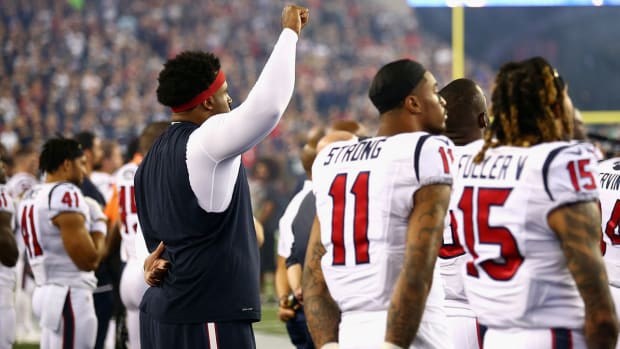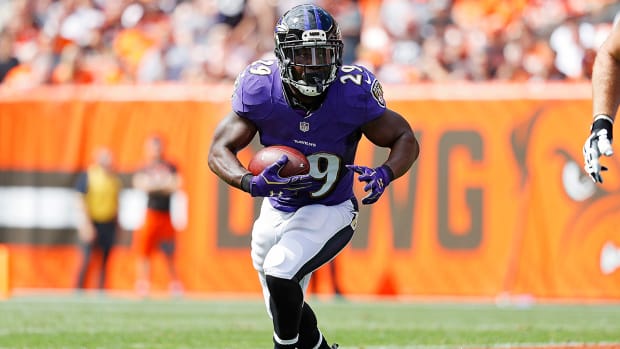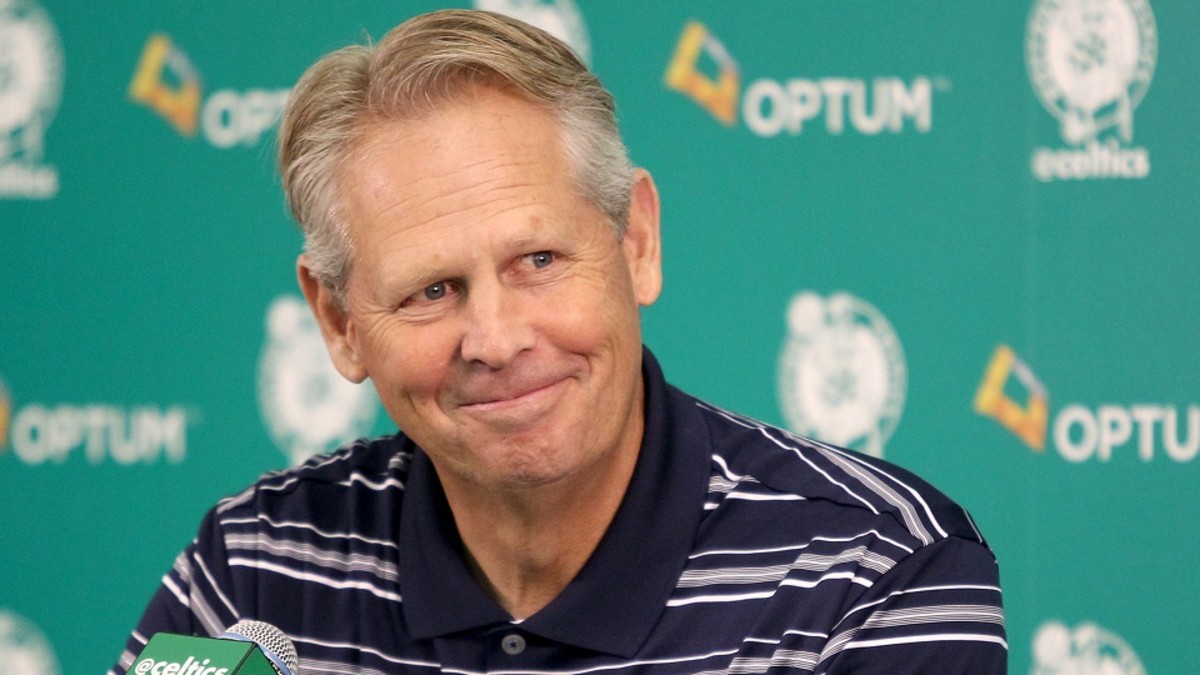
With picks, players and potential, the Celtics are poised for ... something
With the exception of the Philadelphia 76ers, which have taken asset collecting to a whole new level, the Boston Celtics have put more effort into the practice over the last two-plus years than any other team in the NBA.
- The process started strangely, with the June 2013 trade of title-winning head coach Doc Rivers to the Los Angeles Clippers in exchange for a first-round pick.
- Days later, it continued with the dealing of Paul Pierce and Kevin Garnett to Brooklyn, with Boston receiving salary flotsam (in the form of Gerald Wallace, Kris Joseph, Kris Humphries and MarShon Brooks) plus the Nets’ first-round picks in 2014, 2016 and 2018, and the right to swap first-rounders with Brooklyn in 2017.
- Then, ahead of the 2014 offseason, the Celtics sent a top-55 protected second-round pick — the minimum required compensation for trades — to Cleveland (which needed to sign LeBron James) for Tyler Zeller, Marcus Thornton and a (top-10 protected) first-round pick scheduled to be conveyed between 2016 and 2018. That’s a solid rotation player plus a pick (keep this part in mind for later) essentially for free.
- Another trade with the Cavs a few months later netted Boston two additional second-round picks — one each in 2016 and 2017.
- In December, Boston traded a very unhappy Rajon Rondo to the Dallas Mavericks in exchange for Brandan Wright, Jae Crowder, Jameer Nelson, a protected first-round pick (which the Celtics will keep if it falls outside the top-seven any time between 2016 and 2020), and yet another second-rounder.
But wait, there’s more ...
- In January, Wright was flipped to Phoenix for a first-round pick (this one was via the Timberwolves, so it’s likely to convert to two second-rounders).
- Jeff Green — truly the last holdover from the old era, as he was the bounty Boston received from the Thunder in exchange for Kendrick Perkins — was then shipped to Memphis for Tayshaun Prince, Austin Rivers and another first-round pick.
- Austin Rivers was held hostage for a few weeks until Doc coughed up Chris Douglas-Roberts, Shavlik Randolph and another second-rounder to land his son.
- Prince, long past the time when he was still a useful player, was eventually sent back to Detroit for Luigi Datome and Jonas Jerebko — actual rotation players.
- On the same day, Thornton and the pick Boston received from the Cavs in the Zeller trade were used to take Isaiah Thomas from the Suns.
After all that maneuvering over the course of two years, Boston turned Rivers, Garnett, Pierce, Rondo, Green and a fake second-round pick into Brad Stevens (hired from Butler to replace Doc), Zeller, Crowder, Thomas, Jerebko, four first-round picks (if we convert the Minnesota pick to two seconds, as is likely to happen), swap rights to three more firsts, and five second-rounders. Asset-wise, that’s a whole lot to work with, and in an age where having a treasure trove of assets is a prerequisite for butting your way into the discussion when superstars become available via trade, it appeared the Celtics were sitting on a gold mine.
NBA training camp storylines: Eastern Conference
But assets oftentimes look better from afar and a few years out. Sometimes, you can’t get teams (or players, for that matter) to bite on your offer, and you miss out on big free agents or you don’t swing the big trade. Instead, you wind up making stopgap moves designed to prop up a few noticeable weaknesses so that you can make the playoffs.
Some of the picks Boston received in those deals have already been used — on Kentucky swingman James Young, Georgia State guard R.J. Hunter, and LSU forward Jordan Mickey.
Boston tried to package nearly all of the rest of them to move up in this past June’s draft and snag former Duke wing Justise Winslow, but the Hornets wouldn’t bite. That setback came after they tried to get in on the Kevin Love trade negotiations last summer and found their pile of assets wasn’t quite as appealing as the ones controlled by the Cavaliers. And they never consummated a trade for Kings star DeMarcus Cousins; his long-rumored team-up with fellow Kentucky Wildcat Rondo happened in Sacramento instead.
As a result, perhaps unsurprisingly, the 2015–16 Celtics look a bit more like a collection of players than they do a team.
There are ball-handling guards: Isaiah Thomas, Marcus Smart, Terry Rozier and Evan Turner.
There are shooters: R.J. Hunter and James Young.
There are hard-nosed wing defenders: Avery Bradley and Jae Crowder.
There is a massive collection of power forwards — seven of them, to be exact: Mickey (this year’s No. 33 pick), David Lee (acquired in a trade for Gerald Wallace earlier this summer), Perry Jones (also acquired via trade), Amir Johnson (signed in free agency), Jared Sullinger, Kelly Olynyk and Jerebko. That they all have different things they do well bodes nicely for Stevens’ lineup options, but maybe not for all the players’ prospects for minutes. The only real center on the roster is Zeller, though, so you can bet a bunch of these guys will see time shifting up a position.
It’s an intriguing group, to be sure, and it’s likely that Stevens will sort out how to win with them. In his two seasons so far in the NBA, he’s proven himself to be smart and crafty enough to mold lesser groups into something of note.
It is not difficult to see Thomas jetting around an endless series of screens and into the lane, finishing over the trees or slithering his way around until the defense bends just enough to create an opening for somebody else; to see Bradley and Crowder working together to lock up scorers on the wing; to see Smart turning into exactly the kind of all-court force the Celtics thought they were getting when they tabbed him with the No. 6 pick of the 2014 draft; to see Young and Hunter sniping away from outside when they get the chance; to see Johnson, Lee and even Olynyk working the pick-and-roll or pick-and-pop in conjunction with Thomas or Smart; to see Zeller taking the next step and becoming a dependable starter.
Happy and Healthy: Chris Bosh values life after near-death experience
But it is difficult, even if things go perfectly, to see the combination of all that amounting to much more than what the Celtics were last year: an interesting — if very obviously flawed — team that may or may not sneak into the playoffs, but is all but certain to bow out pretty quickly if they do. For now, despite all the wheeling and dealing, Boston is a team smack dab in the frustrating middle.
To observers both casual and die-hard, the middle is arguably the worst place for an NBA team to be. You’re not quite a contender, but you’re also not quite a doormat that competes for the top pick in the draft. Nobody would go so far as to say the Celtics belong in the select group of title contenders, but most do expect them to be right in the mix for a bottom-half-of-the-East playoff spot once again. They’re just ... pretty good.
Because of all their various moves, though, the Celtics aren’t necessarily stuck in the middle.
With the cap set to rise again next summer, Boston only has $25.5 million in salary guaranteed for the 2016–17 season. That number will change once the team decides what to do with options assigned to players on the roster (Smart, Olynyk and Young are all but assured to see their team options picked up, for example, which would add nearly $8.5 million to the books), but it’s nearly certain that they enter the summer flush with more cap room than nearly any other team, barring a big trade before then.
Boston’s cap space wasn’t exactly a huge draw for free agents during the summer of 2015, but if some of their young players flash in more interesting ways this season, it’s not out of the question that the C’s can sneakily land an unexpected free agent, a la the Bucks and former Piston Greg Monroe.
They’ll also have at least two — and possibly three or four first-round picks — to play with in the 2016 draft. They could once again try to package a bunch of picks together in an attempt to move up and grab their next star, or they could hang onto the picks and play the odds that one shot is bound to hit the bullseye.
In a way, the Celtics’ position is reminiscent of where the Rockets were a few years ago, and not only because Houston general Daryl Morey was once Boston president of basketball operations Danny Ainge’s right-hand man. Before swinging the trade for James Harden, Houston’s roster looked like little more than a semi-intriguing collection of mismatched parts. Chandler Parsons, Terrence Jones, Donatas Motiejunas, Omer Asik, Patrick Patterson and Jeremy Lin all were on the roster together. That’s the start of a decent roster, at least, that just needs a star to carry it. Those Rockets also had Kevin Martin, Jeremy Lamb and a gaggle of picks, three of which were used to swing the Harden deal.
It’s more difficult to unearth a Harden type now, but it’s practically impossible if you don’t have any assets. At least Boston can now get in the game. Whether the Celtics can find someone who’s interested in what they’re selling is a different story.
If they can’t, well, it’s not as though the Celtics have never developed stars in-house before. Maybe Smart takes a leap. Maybe Thomas, a former sixth man with a gift for scoring, can hit a new level. Maybe Rozier or Hunter or Young outperform their draft positions. Unless and until one of those things happens, though, the Celtics contender that seemed so sure to materialize as they started collecting assets will have to wait a bit longer.

